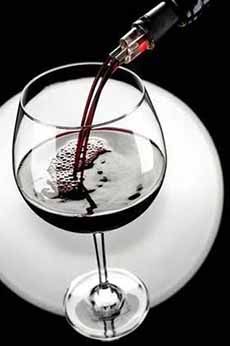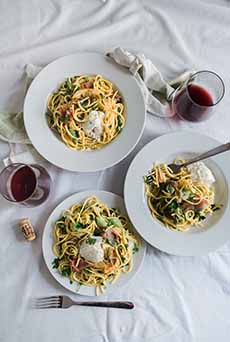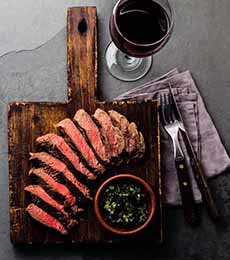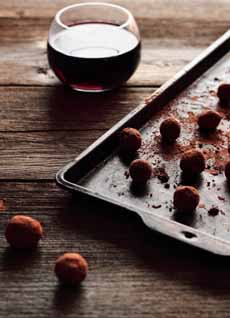American & Global Syrah Wines For International Syrah Day
|
February 16th is International Syrah Day, a wine that most aficionados place in France’s Rhône Valley* and its wine-making region, called Côtes-du-Rhône. You may be familiar with wines from the Côte Rôtie, Hermitage, and Cornas appellations. The best of the wines, from producers such as Chapoutier, Chave, Domaine Gerin, Guigal, Paul Jaboulet Aîné, Saint Cosme, Yves Cuilleron, are bold and rich with fine-grained tannins. They have complex flavors of, variously, black raspberry, black currant, violet, and chocolate—along with savory hints of olive, bacon fat, white pepper, and charcoal smoke. And these bottles will set you back a few bucks ($150 for Guigal Côte Rôtie, for example). So in honor of the day, here are very affordable recommendations from other Syrah-growing regions around the world. As with all wines and other agricultural products (cacao/chocolate, cheese, coffee, olive oil, oysters, tea. vanilla, etc.), the flavors of the wine depend on both the quality of the rootstock and the terroir†. Each region in each country, plus microclimates within the region, will produce Syrah wines with different aromas and flavors. While its flavors vary depending on the terroir, all Syrah wines are rich, usually full-bodied, and always deep purple. Let’s take a look at some wines to try. I’ve even included a few from France. France is the world’s largest Syrah producer, followed by Spain and Australia. Syrah is the most widely planted Rhône varietal in California. But who’d have thought ofƒmichigan Michigan? We found some serious Syrahs from that state. At first, we held back on listing them was that they were not widely available for purchase. Still, I think they deserve a mention, and I’ve added them in the notes below. — Kris Prasad, Wine Editor Syrah, also known as Shiraz, is a red grape varietal grown throughout the world. It’s a cross between two obscure grapes from southeastern France, Dureza and Mondeuse Blanche. It’s not the same as Petite Sirah, which is a cross between Syrah with Peloursin, a red grape believed to have originated in the northern Rhône-Alpes region. Wineries far beyond France have found great success planting Syrah, Viognier, and other classic Rhône grapes. They typically deliver spicy, peppery, flavors with notes of black fruits and meat/bacon. How about putting together a group of these and invite your friends to a tasting, be it wine and appetizers, a cookout or a potluck. One reason to try Syrah is if you’re a meat-lover. It’s great with grilled and roasted meats and poultry. So here’s an idea: *The indigenous grape varieties that grow in the region—Grenache, Mourvèdre, Roussanne, Syrah, and Viognier are the main ones—are often referred to as Rhône grapes. †Terroir, pronounced tur-WAH, is a French agricultural term referring to the unique set of environmental factors in a specific habitat that affects a crop’s qualities. These include climate, elevation, proximity to a body of water, slant of the land, soil type, and amount of sun. These environmental characteristics give the wines produced from these grapes a unique character. ‡Free Run Cellars and Tabor Hill make excellent Syrah, in very different styles. The Tabor Hill 2018 was the richer and fuller of the two, but the Free Run Cellars 2018 Syrah was the more balanced, delicious, and ultimately preferred. Both are worth seeking out. They average around $27. ‡‡Syrah and Shiraz are the same grape varietal. In an effort to differentiate their wines from the French style of Syrah, Australian winemakers have called their wines Shiraz. Historically, the name Shiraz refers to the wine produced around the city of Shiraz in Persia (modern Iran). By the 9th century, the city of Shiraz had already established a reputation for producing the finest wine in the world. But modern Shiraz has no connection to that wine. In modern Iran, wine cannot be produced legally due to the prohibition of alcohol in Islam. Before the Islamic Revolution in 1979, there were up to 300 wineries in Iran; now there are none [source]. |
|
|
|
|
||








